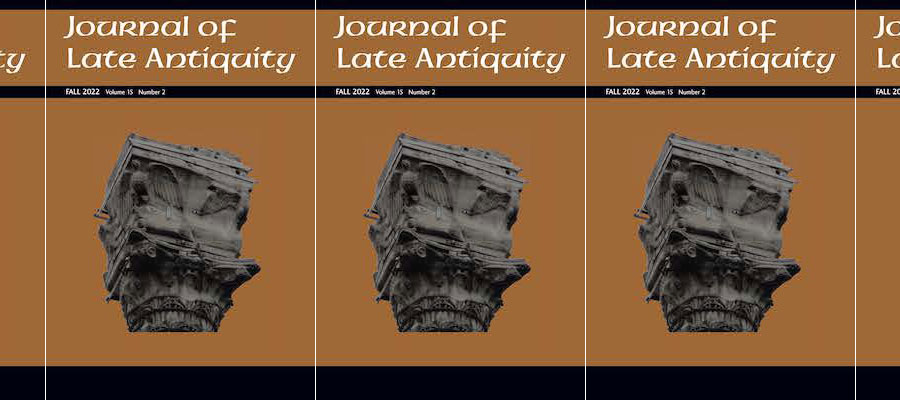Journal of Late Antiquity, volume 15, number 2 (Fall 2022). Special Issue: Shaping Christian Politics in Late Antiquity.
CONTENTS INCLUDE
Emperors, Aristocrats, and Columns: Christian Imperial Politics in the Late Fifth Century CE as Reflected in the Life of Daniel the Stylite
Meaghan McEvoy
This paper examines the hagiography of Daniel the Stylite, believed to have been written by one of his disciples soon after the saint's death at Constantinople in the late fifth century. It first explores the identity of Daniel's named patrons, highlighting the status of these individuals as members of former imperial families who were not currently in power in the East, but who were competing with the reigning emperors of the day for patronage of the holy man. Second, it highlights the imperial-like manner of the hagiographer's presentation of Daniel, particularly his column-dwelling existence with its analogies to imperial columns in the city, and his ordination by the hand of God, and it suggests that the author was shaping his presentation of the holy man to appeal to the Christian court of his day. Both of these aspects of the text indicate that the hagiographer wished to present Daniel as the pre-eminent holy man of late fifth-century Constantinople, whose monastery was worthy of future patronage by emperors or aristocrats with imperial connections.
Constructing Christian Bureaucrats: Justinian and the Governor's Oath of Office
Michael Wuk
This article examines aspects of the investiture oath sworn by provincial governors during the reign of Justinian. This oath, which was implemented alongside the promulgation of Novel 8 in 535, was intended to act as an overt articulation of the governor's duties. Owing to this purpose, it is significant that parts of the oath's formula directly relate to the swearer's doctrinal affiliation. The governor could not begin his period of service without first stating his agreement with a sanitized form of imperial Christianity and promising to prevent the existence of sects which opposed what the emperor contemporaneously defined as "orthodoxy." Through these crucial yet brief statements, gubernatorial bureaucrats publicly demonstrated that their administrative remit also concerned provincial religious conflicts. This expression was an imperial response to the ongoing dialogue between state and church actors about the nature of Christian civil service. Through the implementation of this carefully constructed oath of office, Justinian made his provincial governors characterize themselves as "orthodox" servants in an "orthodox" Christian empire.
Procopius and the Lord of the Demons: The Synthesis of the Demonic Justinian
Ryan Denson
This article examines the sections of the sixth-century Secret History of Procopius of Caesarea where the emperor Justinian, and occasionally his wife, Theodora, were portrayed as demons, further giving special consideration to the three instances where Justinian was referred to specifically as the "Lord of the Demons" (ἄρχων τῶν δαιμόνων). I argue that Procopius's depiction of the demonic Justinian was fundamentally the result of a synthesis of contemporary rumors and apocalyptic thought, imbued with a literary flourish, while the term "Lord of the Demons" also had a more distinct resonance in the Secret History and in the roughly contemporary commentary by Oecumenius on Revelation, wherein it is used by both authors to refer to an Antichrist-like figure in a position of political power. The demonic Justinian was, then, a figure befitting of a political invective, yet rather than being a simple caricature premised solely on inversions of the emperor, it was the manifestation of a complex confluence of political discontent, as well as aspects of Christian demonology and eschatology.
